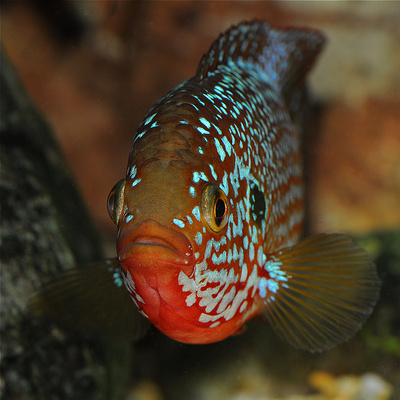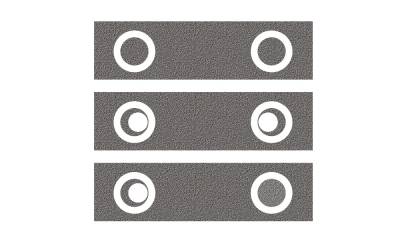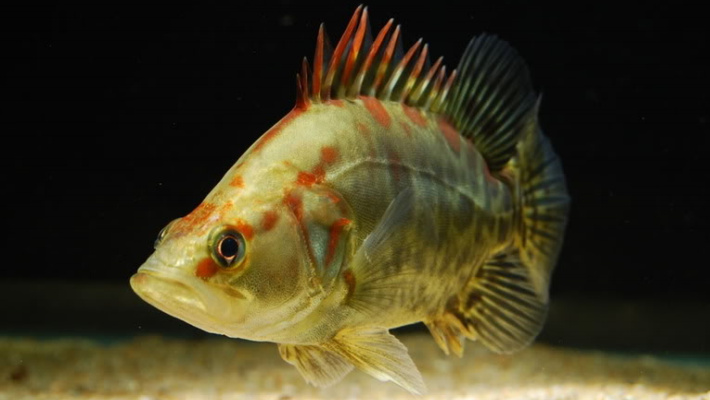|
Among
different mechanisms of adjusted effectiveness of amimetic visual stimuli
matched with the corresponding receptive fields, bilateral symmetry of spots
and spatial symmetry of gratings play an exceptionally inportant role (e.g.,
Kenward et al., 2004). The effectiveness of pair stimuli is determined
by the bilateral symmetry of visual system and visual perception evolved during
millions of years in the field of Earth gravitation, but the causes of the
evolution of repetitive stilmuli and the corresponding receptive fields are
unclear. Kenward et al. (2004) consider about ten factors that might lead to
the evolution of repetitive visual stimuli and the corresponding receptive fields,
including the highest detectableness of repetitive stimuli on the background of
environmental optic noises.
In
particular, crosswise striped patterns and lengthwise
striped patterns play an important role in fish behaviour.
For
example, in swordtail
fish, Xiphophorus cortezi, and some
other poeciliids, females show preference for males with artificially
manipulated symmetrical vertical bars (Schlüter et al., 1998; Morris et al., 2001). In
the same context, in pipefish, Syngnathus
typhle, males prefer ornamented females, with crosswise striped patterns
(that work as amplifiers of female body size) over lengthwise ones (Berglund &
Rosenqvist, 2001). 
Fig.1 (read text)
Coss (1979)
has conducted laboratory experiments with early fry of jewel fish, Hemichromis bimaculatus, and artificial
models of head of adults (Fig.1) equipped with symmetric and asymmetric spots.
It is shown that models with two horizontal spots (Fig.2) induce the most
intensive fright responses of fry than any others. According to Blest (1957),
pair horizontally arranged crosses, spots and eye-spots induce fright responses
in birds. It is shown in experiments with naïve chicks, Gallus gallus domesticus, that any asymmetry in size, shape and
color of pair stimuli (Fig.3) affects their effectiveness (Forsman & Herrström, 2004). 
Fig.2 (read text) 
Fig.3 (read text)
As shown
in experiments with fry of jewel fish, three and four spots are bilaterally
symmetric but less effective than two horizontal spots (Coss, 1979). It may
mean that fry must spend more time to recognize the more complicated stimuli
and, finally, to make the corresponding decisions.
Basic References
Berglund
A., Rosenqvist G. 2001. Male
pipefish prefer ornamented females. Animal Behaviour 61, 345-350
Blest A.D. 1957. The function of eyespot patterns in the
Lepidoptera. Behaviour 11, 209-256
Coss G.R. 1979. Delayed plasticity of an instinct:
Recognition and avoidance of 2 facing eyes by the jewel fish. Developmental Psychobiology 12, 335-345
Forsman A.,
Herrström J. 2004. Asymmetry in size, shape, and color impairs the
protective value of conspicuous color patterns. Behavioral Ecology 15, 141-147
Kenward B.,
Wachtmeister C. A., Ghirlanda S., Enquist M. 2004. Spots and stripes: the
evolution of repetition in visual signal form. Journal of Theoretical Biology 230, 407-419
Morris M.R., Elias J.A., Moretz J.A. 2001. Defining vertical bars in relation to female preference in the swordtail fish Xiphophorus cortezi
(Cyprinodontiformes, Poeciliidae). Ethology
107, 827-837
Schlüter
A., Parzefall J., Schlupp I. 1998. Female preference for symmetrical vertical bars in male sailfin
mollies. Animal Behaviour 56, 147–153
|








 SUBSCRIBE
SUBSCRIBE





